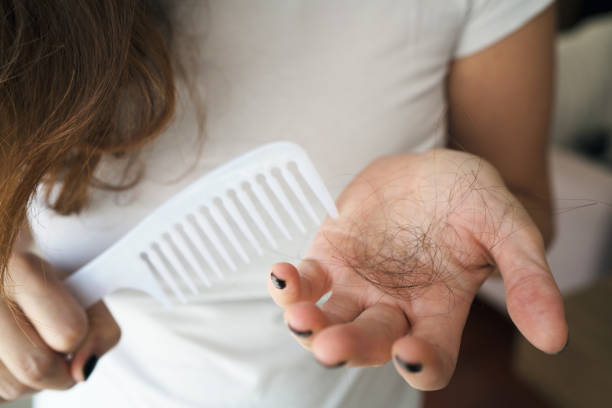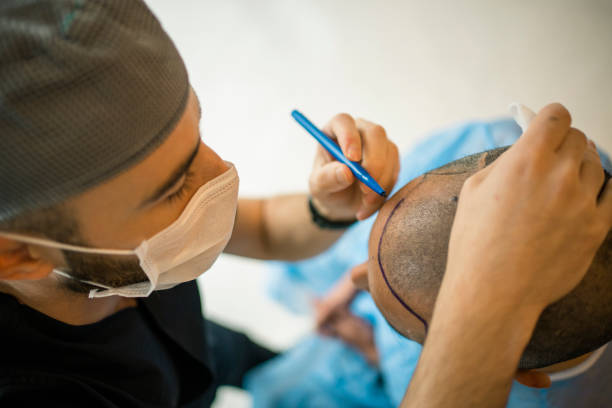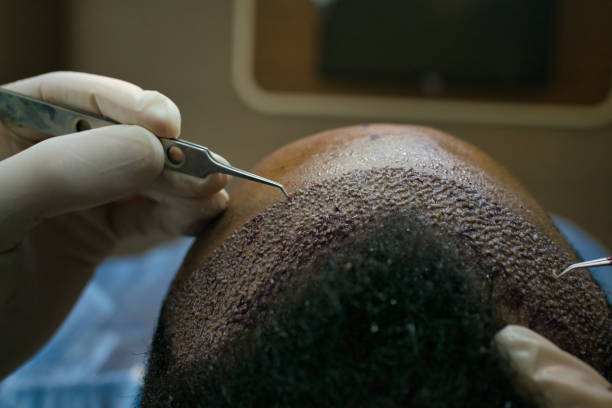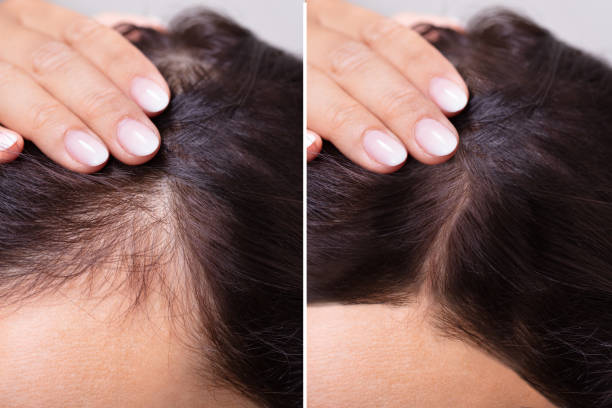Introduction
Hair Transplant procedures stand as a ray of hope in a world where appearance significantly impacts self-esteem and confidence. For those battling hair loss, these treatments offer more than just hair restoration – they’re a path to regaining self-assurance. This guide delves into techniques, preparation, recovery, and post-operative care, empowering you with knowledge to make an informed decision about your hair journey.
Understanding Hair Loss

Hair loss, a natural part of aging, can be accelerated by several factors. Genetics, hormonal imbalances, stress, and environmental elements are all contributors to this phenomenon. The emotional toll of losing hair often leads to decreased self-confidence and affects one’s overall quality of life. It’s crucial to understand these causes to appreciate the significance of hair transplant procedures.
Exploring Hair Transplant Techniques

Follicular Unit Transplantation (FUT)
Follicular Unit Transplantation (FUT), also known as the strip method, involves surgically removing a narrow strip of scalp from the donor area, which is then divided into individual follicular units for transplantation. While it provides a higher yield of grafts, it leaves a linear scar.
Follicular Unit Extraction (FUE)
FUE, a minimally invasive technique, involves extracting individual follicular units directly from the donor area using a specialized punch tool. Although it avoids linear scarring, it requires more time and expertise. There are advantages to both methods, The ultimate decision depends on the specific requirements and personal preferences of the individual. I have made sure to correct any spelling, grammar and punctuation errors.
Comparing FUT and FUE Techniques
The choice between FUT and FUE depends on several factors, including hair type and the extent of hair loss. and desired outcomes. FUT is often preferred for a higher number of grafts, while FUE is ideal for smaller sessions and those who want to wear shorter hairstyles post-surgery. Understanding these differences aids in making an informed choice.
Preparation for Hair Transplant

Consultation with a Specialist
A crucial first step is consulting a qualified specialist who assesses your condition, discusses expectations, and outlines the appropriate procedure. Transparent communication with the specialist ensures alignment between expectations and outcomes.
Assessing Candidacy and Pre-operative Instructions
During the consultation, the specialist evaluates your candidacy, considering factors like overall health and expectations. Following pre-operative instructions, which may include dietary adjustments and temporary cessation of specific medications, ensures optimal conditions for the procedure.
The Hair Transplant Procedure

Step-by-step Breakdown
On the day of the procedure, the patient is prepared for surgery. Local anesthesia is administered to the donor and recipient areas. Grafts are extracted and transplanted meticulously, ensuring a natural-looking result. The surgery, performed by skilled professionals using advanced technology, minimizes discomfort and provides a smooth experience.
Pain Management and Recovery
Post-surgery, patients are provided with detailed aftercare instructions, including pain management techniques and prescribed medications. Adequate rest and following post-operative guidelines are essential for a successful recovery.
Post-Transplant Care and Recovery

Immediate Post-operative Care
Proper dressing of the donor and recipient areas is crucial. Patients receive instructions on washing the scalp gently, avoiding excessive sun exposure, and refraining from strenuous activities. Following these guidelines reduces the risk of infection and promotes healing.
Long-term Recovery and Healing
It is necessary to schedule regular follow-up appointments to monitor the progress. I will make sure to correct any spelling, grammar, and punctuation errors to ensure clarity.Potential complications, although rare, are promptly addressed. Understanding the long-term recovery process and adhering to the specialist’s advice ensures optimal results and minimal risks.
Results and Expectations
Realistic Expectations
While hair transplant procedures yield remarkable results, it’s essential to have realistic expectations. The timeline for visible results varies, with initial growth noticeable within a few months. Patience is vital, as it may take up to a year to see the final, natural-looking outcome.
Hair Transplant – Boosting Self-confidence
The transformation after a successful hair transplant is not limited to physical appearance. The restoration of hair often leads to a significant boost in self-confidence, Positively impacting different areas of life, such as personal relationships and career goals, can bring about substantial benefits. It is important to recognize the potential impact one can have on themselves and those around them. refers to the beneficial influence that one’s actions or decisions can have on different areas of their life, such as their social connections and career achievements.
Alternative Solutions to Hair Loss

Non-surgical Treatments
Topical solutions, medications, laser therapy, and PRP treatments are non-surgical alternatives to hair transplants. While these options may slow down hair loss, they might not provide the exact permanent, natural results of a transplant.
Lifestyle Changes and Natural Remedies
A balanced diet, regular exercise, stress management, and natural remedies like herbal supplements are essential components of a holistic approach to hair health. While these methods can support overall well-being, they might not reverse extensive hair loss.
Costs and Considerations for Hair Transplantation
Budgeting and Insurance Coverage
Budgeting for a hair transplant involves considering the procedure’s total cost, including consultations, surgery, aftercare, and potential follow-up appointments. While some insurance plans cover certain aspects, it’s essential to explore financing options if needed.
Researching Reputable Clinics
Researching reputable clinics and specialists is paramount. Reading patient testimonials, checking credentials, and evaluating before-and-after photos can help in choosing a trustworthy provider. Making an informed decision ensures a safe and successful experience.
Side Effects of Hair Transplant

Hair transplantation is generally considered safe and effective, but like any surgical procedure, it can have some side effects. Some of the typical side effects of the treatment may include swelling, bruising, and redness in and around the treated areas. which usually subside within a few days to a week. In some cases, patients might experience numbness or itching in the donor and recipient areas, which also tend to resolve on their own.
There is a risk of infection, although it is rare and can be managed with proper care and prescribed medications. Additionally, some patients might notice shock loss, a temporary shedding of existing hair around the treated areas, but this hair typically regrows over time. Patients need to follow post-operative care instructions diligently to minimize these side effects and promote a smooth recovery.
Duration of the Hair Transplant Process:
The duration of a hair transplant process varies depending on the technique used and the number of grafts to be transplanted. Generally, the procedure can last anywhere from 4 to 8 hours, though it can extend to a full day for more extensive sessions. Factors such as the patient’s comfort, the complexity of the case, and the surgeon’s expertise play a role in determining the length of the procedure. While the surgery itself might take several hours, the entire process, including pre-operative preparations and post-operative care discussions, ensures a comprehensive approach to the patient’s needs and expectations.
Hair Transplantation Before and After:

Before a hair transplant, individuals often experience a profound impact on their self-esteem due to hair loss. Many struggle with a diminished sense of confidence and self-worth. However, after undergoing a successful hair transplant procedure, there is a noticeable transformation both physically and emotionally. Patients regain their lost hair, often leading to a significant boost in self-confidence and overall well-being.
The procedure’s natural-looking results provide individuals with a rejuvenated appearance, enabling them to embrace new opportunities and face the world with renewed self-assurance. Hair transplantation not only restores hair but also restores a sense of identity and empowerment, allowing individuals to lead a more fulfilling and confident life.
Conclusion
In conclusion, embarking on a hair transplant journey is a life-changing decision that goes beyond physical transformation. It’s a restoration of confidence and self-assurance. By understanding the various techniques, preparing adequately, following post-operative care, and having realistic expectations, individuals can reclaim their lost hair and, more importantly, their sense of self.
FAQ About Hair Transplant
Q1: Is hair transplant suitable for everyone?
A1: Hair transplant suitability depends on individual factors like overall health, extent of hair loss, and expectations. Consulting a specialist is crucial to determine candidacy.
Q2: How long does it take to recover after a hair transplant?
A2: Recovery time varies, but patients can typically resume normal activities within a week. Full recovery and visible results may take several months.
Q3: Are there any risks associated with hair transplant procedures?
A3: While complications are rare, potential risks include infection, scarring, and uneven hair growth. Skilled professionals and proper aftercare minimize these risks.
Q4: Can I undergo a hair transplant if I have a tight budget?
A4: Many clinics offer financing options, making hair transplants accessible to a broader audience. It’s essential to research clinics that provide quality services within your budget.
Q5: Will the transplanted hair look natural?
A5: Yes, when performed by skilled professionals, hair transplant results appear natural. The transplanted hair grows, falls, and regrows like natural hair.
Q6: How long does the hair transplant procedure typically last?
A6: The duration of a hair_transplant procedure varies based on the technique, the number of grafts to be transplanted, and individual factors. On average, the system can last anywhere from a few hours to a full day.
Q7: Is there any pain or discomfort during the hair transplant surgery?
A7: Patients are administered local anesthesia during the hair transplant procedure, ensuring they do not feel pain or discomfort. After the surgery, some mild discomfort or soreness is expected, which can be managed with prescribed medications.
Q8: Can hair transplants be performed on women experiencing hair loss?
A8: Yes, hair_transplant procedures are suitable for women with hair loss, provided they are good candidates. Women experiencing pattern baldness, hairline recession, or thinning in specific areas can benefit from hair_transplant surgeries tailored to their needs.
Q9: Will I need multiple sessions for a complete hair transplant?
A9: Multiple hair_transplant sessions may be necessary depending on the extent of hair loss and desired density. Results vary, with some individuals achieving satisfactory outcomes in one session, while others may require additional sessions for fuller coverage and a more natural appearance.
Q10: How soon can I return to work and resume regular activities after a hair transplant?
A10: After the procedure, patients can return to work and light activities within a week. It’s best to avoid heavy lifting and vigorous exercise for a few weeks to promote healing and prevent complications.
Read also.. The Ultimate Guide to Scalp Health: Understanding, Care, and Common Issues

